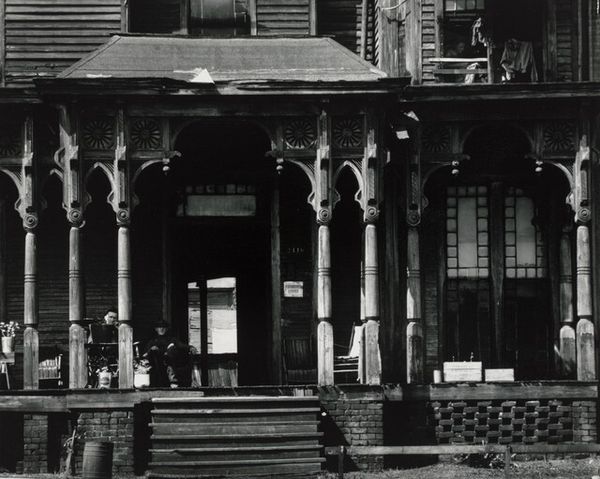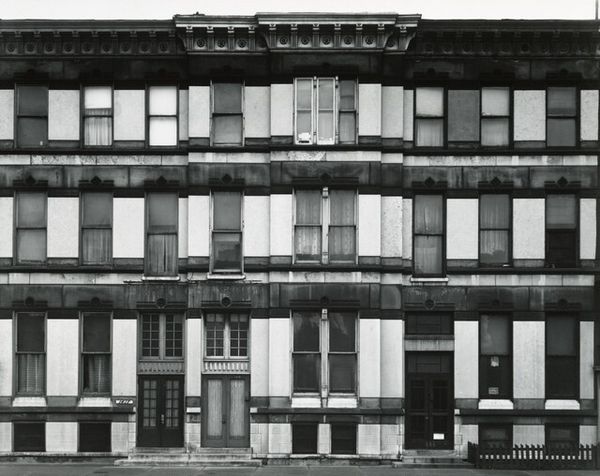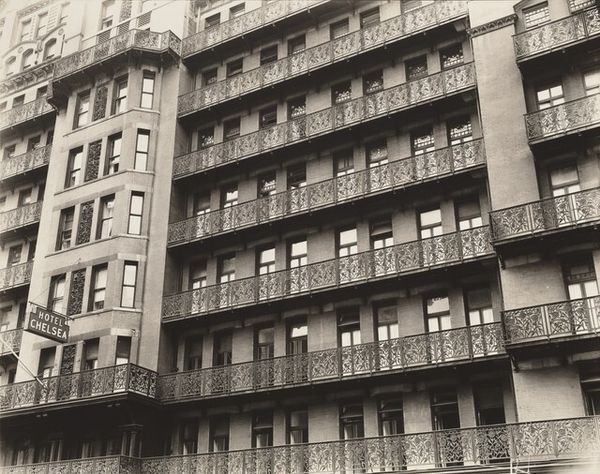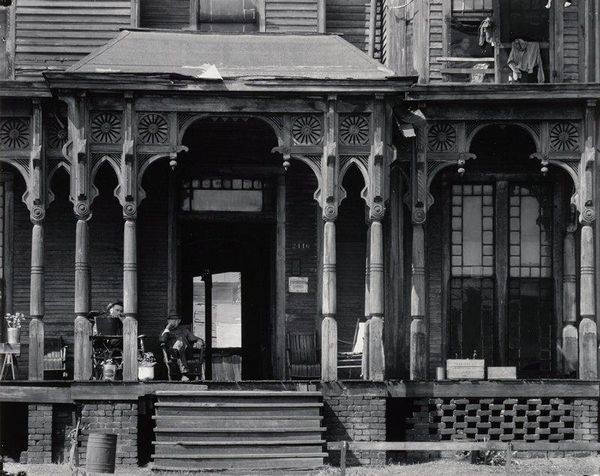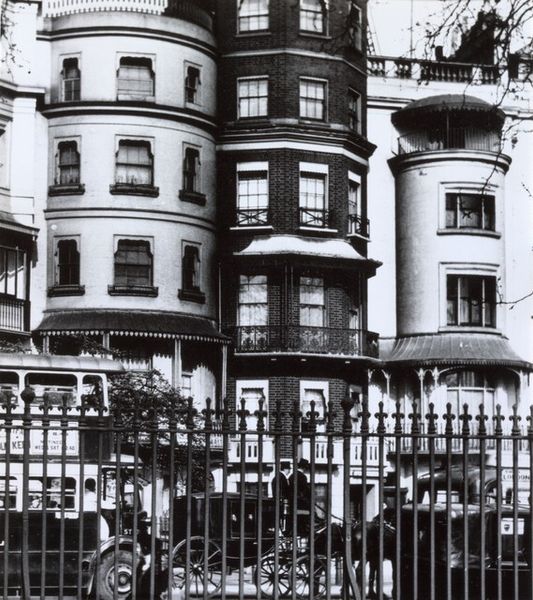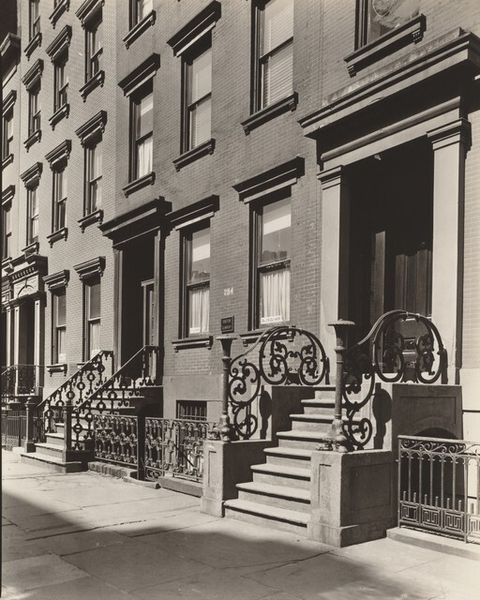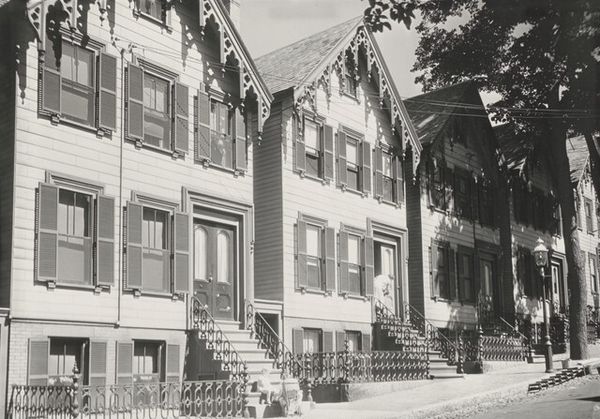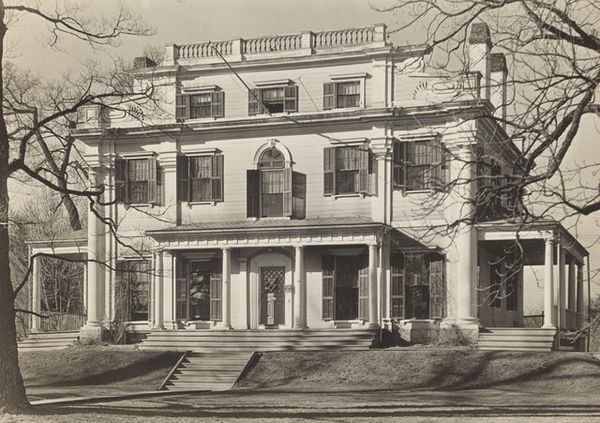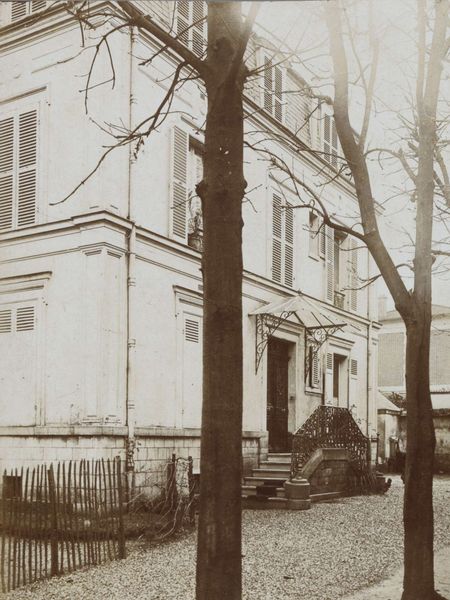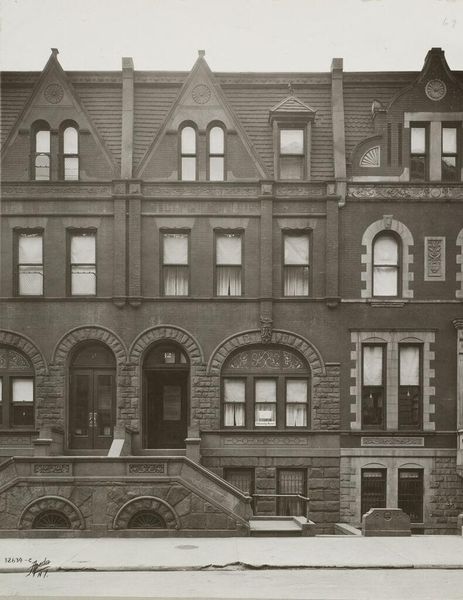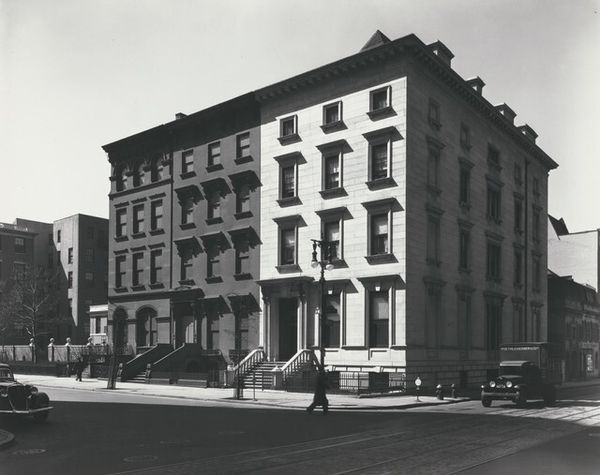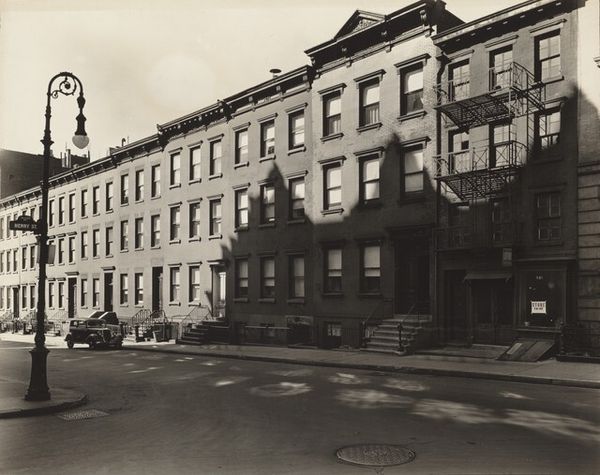
Wrought Iron Ornament, 112 and 114 West Eleventh Street, Manhattan 1937
0:00
0:00
photography, architecture
#
precisionism
#
black and white photography
#
sculpture
#
black and white format
#
historic architecture
#
street-photography
#
photography
#
monochrome photography
#
cityscape
#
architecture
#
historical building
#
monochrome
Dimensions: sheet: 25.2 x 20.2 cm (9 15/16 x 7 15/16 in.)
Copyright: National Gallery of Art: CC0 1.0
Curator: Berenice Abbott’s 1937 photograph, "Wrought Iron Ornament, 112 and 114 West Eleventh Street, Manhattan", presents us with a stark, yet elegant façade of a New York City building. Editor: My immediate reaction is drawn to the almost excessive ironwork. It feels weighty, ornate… perhaps a symbol of the layered socioeconomic fabric of that era. Curator: Absolutely. Abbott, working under the WPA’s Federal Art Project, wasn't merely documenting architecture. She was capturing a rapidly vanishing cityscape shaped by class and power. The elaborate wrought iron serves as a material marker of early wealth and industrial skill, now juxtaposed against the realities of the Depression era. Editor: Precisely! It's critical to consider the social implications inherent in wrought iron’s production. This ornament wasn't simply designed; it was forged, demanding skilled labor and specialized resources, thereby solidifying a specific division of labor along lines of wealth and perhaps even social class, and immigrant labor in New York in that time. Curator: Exactly. The architecture itself reveals layers of societal narratives: the design alluding to aspiration and status, and its presence preserved through a federal initiative during economic crisis – it exposes inequalities and efforts to reconcile them, no? Editor: The contrast between the decaying beauty of the wrought iron and its inherent symbolism reveals a paradox. It is indicative of material decline coupled with the persistence of craft. One can feel its making and forming, and what has remained after so many years. Curator: And don’t overlook the intersection of gender here. Think about whose labor was supported by WPA projects and what it means to archive buildings for their material cultural impact, as architecture has long stood as a monument for patriarchal success, hasn’t it? Editor: Indeed. By highlighting architectural details typically overlooked in favor of grander monuments, Abbott also offers an alternate route, valuing vernacular craftsmanship, thus forcing viewers to reconsider historical worth by the making of place. Curator: Ultimately, Abbott gives us more than a mere depiction of a building. The photograph operates as a signifier for complex dialogues regarding value, production, gender, and urban evolution. Editor: For me, the artwork operates on several planes simultaneously. Abbott uses material culture as a powerful tool through which the image becomes a record of both aspiration and social shifts that characterized this area of Manhattan.
Comments
No comments
Be the first to comment and join the conversation on the ultimate creative platform.
